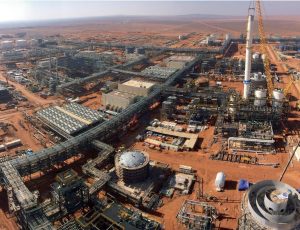
Fertilizer Industry News Roundup
ICL Group has launched an interactive online advisory forum for farmers and agronomists.

ICL Group has launched an interactive online advisory forum for farmers and agronomists.

The phosphates market to date has remained remarkably resilient during the Covid-19 pandemic. Despite early fears, 2020 has seen strong overall demand so far and no major supply-side disruptions. But concerns still lie ahead, as Alberto Persona , principal phosphate analyst at Fertecon/IHS Markit, explains.

Sulphur is becoming an increasingly important crop nutrient – due to a combination of lower sulphur emissions, the increasing prevalence of high-analysis fertilizers and higher cropping intensity.
Ben Pratt joined Mosaic’s senior leadership team at the start of April, having been appointed senior vice president (SVP) for government and public affairs. He was previously the company’s vice president for corporate public affairs, with responsibility for corporate communications, social responsibility and US federal government relations.

Nutrien is the world’s largest crop nutrient company with a market capitalisation of almost $20 billion (Figure 1). This fertilizer industry giant produces and distributes over 25 million tonnes of potash, nitrogen and phosphate products for agricultural, industrial and feed customers globally. The company’s agriculture retail business also serves over 500,000 growers worldwide through a network of international outlets.

Three large-scale phosphoric acid plants constructed as part of the world-class Umm Wu’al project in Saudi Arabia are now fully operational. James Byrd of Worley (formerly Jacobs ECR) describes the execution of the project from basic engineering through to plant performance tests.

We profile the US ‘big three’ North American phosphate producers, Mosaic, Nutrien and Simplot, and disruptive market entrant Itafos.

Although North America is no longer the world’s largest sulphur exporter, it remains a major producer and consumer, and there are still significant exports and imports of sulphur into and out of the region.

The impact of coronavirus on both supply and demand continues to provide considerable uncertainty to the market. With much of Hubei province on lockdown, and a corresponding reduction in ammonia demand for DAP production, Chinese imports appear to be down, pushing more ammonia onto the international market and creating generally bearish sentiment.

At the Nitrogen+Syngas Conference 2020, held in The Hague, Netherlands, Haldor Topsoe launched its new TITAN ™ series of steam reforming catalysts. The company says that the new series, which consists of the RC-67 TITAN and RK-500 TITAN catalysts, offers improved performance and longer catalyst lifetime thanks to the hibonite-rich composition. The addition of titanium promoters adds exceptional mechanical strength while a seven-hole cylindrical shape yields both a very low pressure drop and a high surface area. Pressure drop build-ups in syngas plants can cause unscheduled downtime and cost millions of dollars, while thermal instability during operation can lead to operational risk and reduce plant lifetime. Topsoe says that the catalysts can mitigate these risks, ensuring lower operating costs, increased profit margins, and reduced energy usage.